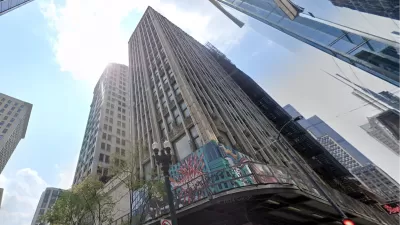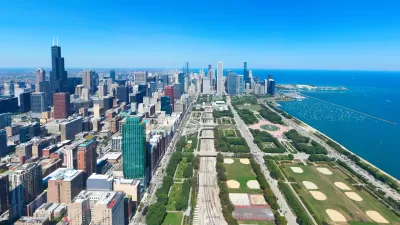Steven Yaccino reports on the ongoing controversy over the proposed demolition of Prentice Women's Hospital, designed by famed Chicago architect Bertrand Goldberg, as officials continue to skirt the issue.
The former Prentice Women's Hospital in Chicago has joined the ranks of America's endangered architectural landmarks, as preservationists play the waiting game with city officials unwilling to stake out a position on its possible demolition.
Designed by the late architect Bertrand Goldberg in 1975, the Prentice is known and admired for its clover-leaf shape, a highly innovative approach to hospital design at the time. But others, writes Yaccino, see the building as nothing more than a vacant eyesore that should be razed for new development. The building has been sitting vacant for a year on land that is now owned by Northwestern University, who have plans to build a new medical research facility in its place after a study revealed that adaptive reuse for the intended purposes would not be feasible.
Preservationists and local advocates are fighting back and urging officials to consider alternative uses for the iconic building. "We feel like the building is infinitely reusable because of the way it's designed," said Christina Morris, from the Chicago office of the National Trust for Historic Preservation.
In a letter to Mayor Rahm Emmanuel, over 60 leading architects addressed their opposition to the proposed demolition and what it would mean for the future of the city: "Chicago's global reputation as a nurturer of bold and innovative architecture will wither if the city cannot preserve its most important achievements." As of now, Emmanuel has yet to state his opinion on the case, and the city of Chicago seems to be holding its breath as it awaits the fate of one of its signature buildings.
FULL STORY: Landmark for Many Is Opportunity for University

Trump Administration Could Effectively End Housing Voucher Program
Federal officials are eyeing major cuts to the Section 8 program that helps millions of low-income households pay rent.

Planetizen Federal Action Tracker
A weekly monitor of how Trump’s orders and actions are impacting planners and planning in America.

Ken Jennings Launches Transit Web Series
The Jeopardy champ wants you to ride public transit.

Rebuilding Smarter: How LA County Is Guiding Fire-Ravaged Communities Toward Resilience
Los Angeles County is leading a coordinated effort to help fire-impacted communities rebuild with resilience by providing recovery resources, promoting fire-wise design, and aligning reconstruction with broader sustainability and climate goals.

When Borders Blur: Regional Collaboration in Action
As regional challenges outgrow city boundaries, “When Borders Blur” explores how cross-jurisdictional collaboration can drive smarter, more resilient urban planning, sharing real-world lessons from thriving partnerships across North America.

Philadelphia Is Expanding its Network of Roundabouts
Roundabouts are widely shown to decrease traffic speed, reduce congestion, and improve efficiency.
Urban Design for Planners 1: Software Tools
This six-course series explores essential urban design concepts using open source software and equips planners with the tools they need to participate fully in the urban design process.
Planning for Universal Design
Learn the tools for implementing Universal Design in planning regulations.
Ada County Highway District
Clanton & Associates, Inc.
Jessamine County Fiscal Court
Institute for Housing and Urban Development Studies (IHS)
City of Grandview
Harvard GSD Executive Education
Toledo-Lucas County Plan Commissions
Salt Lake City
NYU Wagner Graduate School of Public Service





























